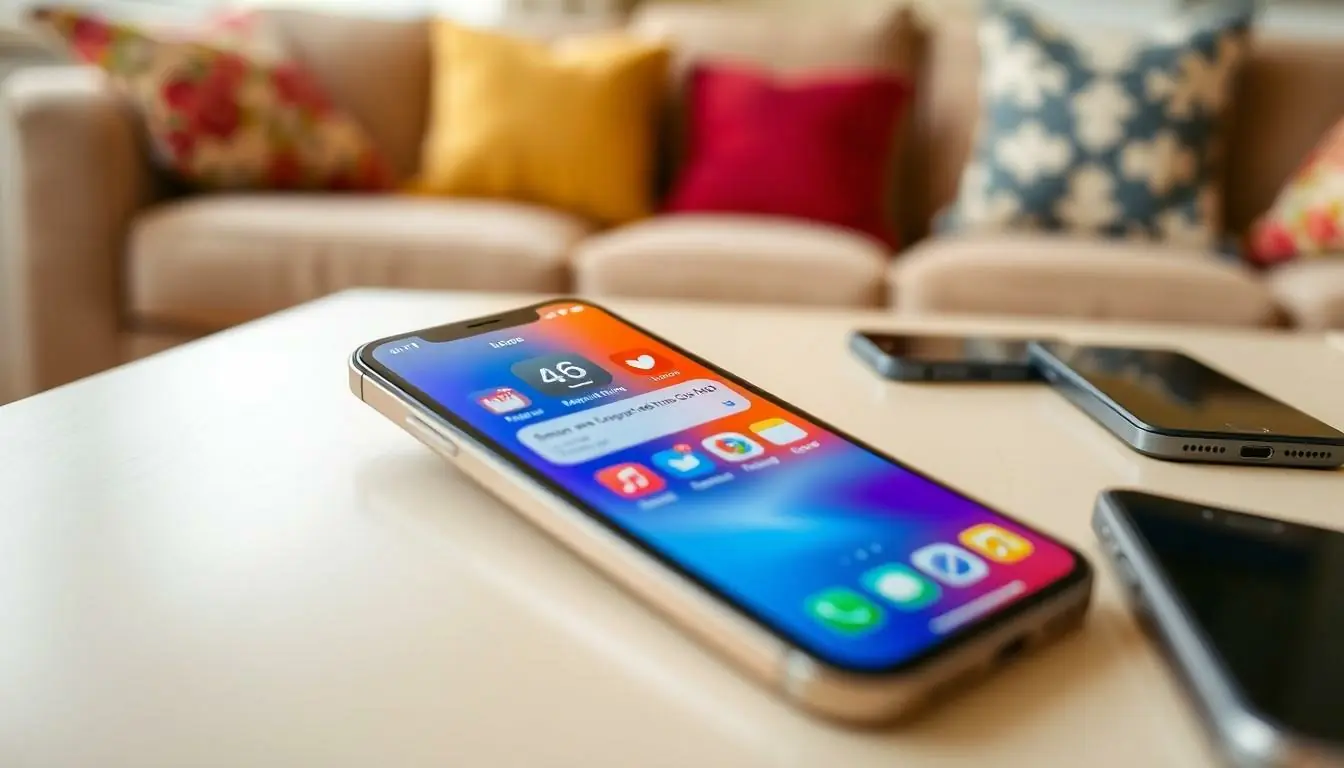Sharing an Apple ID might seem like a great idea—after all, who doesn’t love to share their apps, music, and photos? But when two phones start acting like they’re in a relationship, it can get a little too cozy. Suddenly, your texts are popping up on your partner’s phone, and that embarrassing meme you sent is now a shared treasure. Yikes!
Table of Contents
ToggleUnderstanding Apple ID
An Apple ID plays a crucial role in managing access to Apple’s services. This unique account links various devices and allows users to access apps, music, and more.
What is an Apple ID?
An Apple ID is a personal account used to access Apple services such as iCloud, iTunes, and the App Store. Users must provide an email address and create a password when setting it up. Each Apple ID stores vital information, including storage, purchases, and subscriptions. It connects various devices like iPhones, iPads, and Macs, enabling synchronization of data across platforms. Without an Apple ID, individuals miss out on essential features and updates within Apple’s ecosystem.
Importance of Separating Apple IDs
Separating Apple IDs prevents unintended data sharing between devices. Users often face issues like mixed messages or shared apps when sharing an Apple ID. Individual accounts facilitate privacy and personalized experiences tailored to each user. Separate Apple IDs also improve device management for family members, enabling independent access to cloud storage and unique app purchases. Maintaining distinct Apple IDs encourages a more organized and efficient use of technology within a household.
Reasons for Separation

Maintaining separate Apple IDs proves essential for multiple reasons, primarily focusing on privacy and data management.
Privacy Concerns
Sharing an Apple ID can compromise personal privacy. Users may inadvertently receive messages or notifications intended for another person, leading to uncomfortable situations. Texts and calls merge within shared Apple IDs, blurring boundaries. Personal photos and app usage may become accessible to others when accounts combine. To safeguard individual privacy, separating accounts becomes necessary. Unique Apple IDs ensure that personal data remains confidential and secure among users. Having individualized access fosters a sense of ownership and control over personal information.
Data Management
Data management significantly improves with separate Apple IDs. Each account maintains its own app purchases, photos, and storage, simplifying access and organization. Families can enjoy tailored experiences with individual IDs, allowing them to curate personal libraries. Cloud storage becomes more efficient, eliminating unnecessary overlaps or capacity issues. Organizing apps on different devices grows easier without confusion from shared accounts. Users gain better control of their specific data, enhancing overall device utilization across the household. Thus, separating Apple IDs not only optimizes privacy but also streamlines data management effectively.
Steps to Separate Two Phones
Separating two phones using the same Apple ID involves a few clear steps to ensure each device functions independently.
Backup Your Data
Backing up data safeguards important information before making any changes. Use iCloud or iTunes to create backups of contacts, photos, and app data. Access settings on each device, select “iCloud,” and tap “Back Up Now” for cloud storage. Alternatively, connect the device to a computer and utilize iTunes, selecting “Back Up Now” under the device summary. Completing this step preserves valuable content and prevents data loss during the separation process.
Sign Out of Apple ID
Signing out of the Apple ID on each device removes shared information. Go to “Settings,” tap on the Apple ID at the top, and scroll down to select “Sign Out.” Users should enter the password and confirm the sign-out. This process ensures that messages, photos, and app data no longer share between the two devices, maintaining privacy and independence thereafter. After signing out, both phones can continue functioning without interfering with each other’s content.
Create a New Apple ID
Creating a new Apple ID allows individual ownership of apps and data. Visit the Apple ID website or open “Settings,” then select “Sign in to your iPhone.” From there, choose “Don’t have an Apple ID or forgot it?” Click “Create Apple ID” and follow the prompts to complete registration. Users must provide their name, email address, and security questions for verification. Upon successful creation, each device gains its unique account, ensuring personalized experiences and separate app purchases.
Managing Multiple Apple IDs
Managing multiple Apple IDs enhances user experience and protects privacy. Each account retains unique data, allowing for personalized interactions without interference from other users.
Switching Between Apple IDs
Switching between Apple IDs is straightforward. Users can navigate to Settings, tap their name at the top, and sign out of the current Apple ID. Afterward, they can sign in with a different ID by entering the credentials. This process allows access to different app purchases and iCloud data depending on the Apple ID in use. Frequent switching might lead to syncing challenges, so it’s wise to keep track of which account is being used.
Benefits of Different Apple IDs
Benefits include enhanced privacy and tailored experiences. Separate Apple IDs prevent unintended sharing of messages and notifications. Users enjoy distinct app libraries and personal content, eliminating confusion. Enhanced data management results from separate purchases, making it easier to track subscriptions. Families can curate personal media and manage storage independently, ensuring everyone has a unique, organized experience across devices.
Separating two phones that share the same Apple ID is essential for maintaining privacy and ensuring a personalized experience. By following the outlined steps, users can effectively create individual Apple IDs and prevent the overlap of personal data. This not only safeguards sensitive information but also enhances data management, allowing each user to curate their own apps and media.
With separate Apple IDs, families can enjoy tailored experiences without the risk of receiving each other’s messages or notifications. Ultimately, this separation fosters a more organized and secure digital environment, making device usage more enjoyable for everyone involved.



